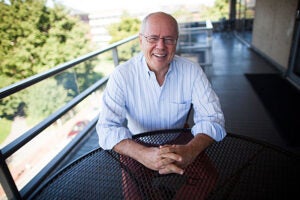Tag: Evolution
-
Nation & World
Hard-won lizards
Research on the evolutionary history of the anole lizard became an international adventure for Professor Jonathan Losos.
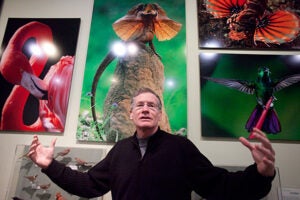
-
Nation & World
Alone with evolution
Efforts by Harvard faculty to understand island evolution form the centerpiece of a new exhibition at the Harvard Museum of Natural History.
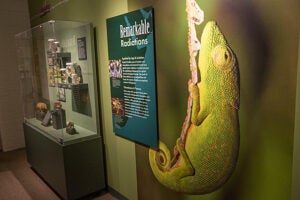
-
Nation & World
Cooking up cognition
A new study suggests that many of the cognitive capacities that humans use for cooking — a preference for cooked food, the ability to understand the transformation of raw food into cooked, and even the ability to save and transport food to cook it — are shared with chimpanzees.
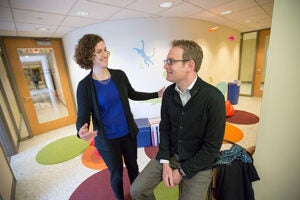
-
Nation & World
Walk like a man
The fossilized hipbone of an ape called Sivapithecus is raising a host of new questions about whether the upright body plan of apes may have evolved multiple times.
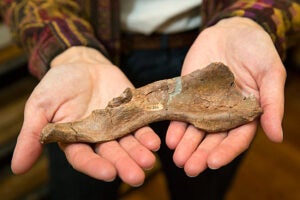
-
Nation & World
Rapid-fire evolution
Faced with stiff competition from an invading species, a Harvard study has found that green anoles evolved larger toe pads equipped with more sticky scales to allow for better climbing in just 20 generations over 15 years.
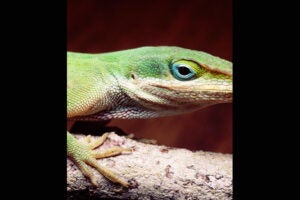
-
Nation & World
Status shift for whale pelvic bones
New research challenges the notion that the small pelvic bones found in whales are evolutionary vestiges.

-
Nation & World
Study of lizards shows trade as a force in biodiversity
New research shows that trade is one of the major drivers of biodiversity among lizard species in the Caribbean islands.
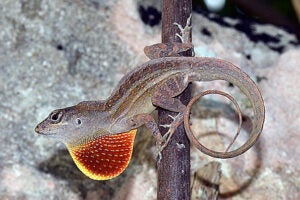
-
Nation & World
Sweet feat
New research by Harvard scientists shows how hummingbirds evolved a novel mechanism of taste.
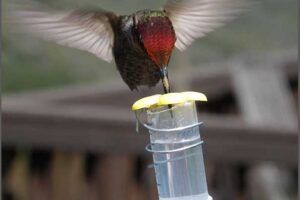
-
Nation & World
Forces of isolation
Research led by a Harvard biologist demonstrated a method for measuring the strength of selection in favor of reproductive isolation.

-
Nation & World
When cooperation counts
A new study conducted by Harvard scientists shows that in deer mice, a species known to be highly promiscuous, sperm clump together to swim in a more linear fashion, increasing their chances of fertilization.
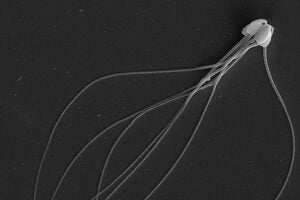
-
Nation & World
Rules of evolution
For most people, rock-paper-scissors is a game used to settle disputes on the playground. For biologists, however, it is a powerful guide for understanding the key role mutation plays in…
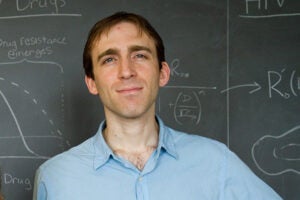
-
Nation & World
Key connection
Scientists have long suggested that the best way to settle the debate about how phenotypic plasticity may be connected to evolution would be to identify a mechanism that controls both. Harvard researchers say they have discovered just such a mechanism in insulin signaling in fruit flies.

-
Nation & World
Negative plus
Led by Professor David Liu, a team of researchers has developed a technique to continuously evolve biomolecules that uses negative selection — the ability to drive evolution away from certain traits — to create molecules with dramatically altered properties.

-
Nation & World
Evolution in real time
After 26 years of workdays spent watching bacteria multiply, Richard Lenski has learned that evolution doesn’t always occur in steps so slow and steady that change can’t be observed.
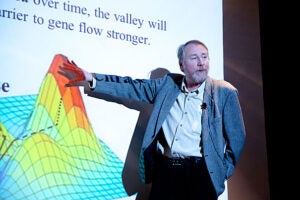
-
Nation & World
Rethinking the roots of altruism
In a new study, Harvard researchers find that inclusive fitness — for decades a standard tool in understanding how altruism evolved — often leads to incorrect conclusions.
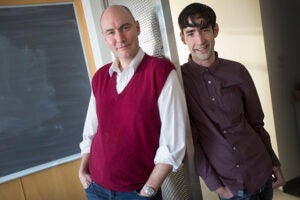
-
Nation & World
Fresh approaches in teaching
Incorporating hands-on, experiential learning with rigorous classroom study is the sort of innovative approach that Harvard has striven to support in recent years, the sort that will play a central role in the Harvard Campaign for Arts and Sciences.
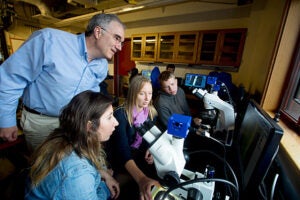
-
Nation & World
Narrative of the body, with a nasty twist
Many modern chronic diseases result from mismatches between how our bodies evolved to be used and how we use them today, Harvard evolutionary biologist Daniel Lieberman writes in a new book.
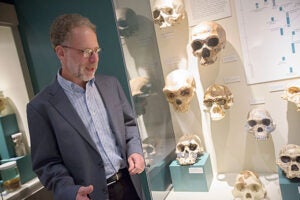
-
Nation & World
Right down the middle, explained
The ability to throw an object with great speed and accuracy is a uniquely human adaptation, one that Harvard researchers say played a key role in our evolution.
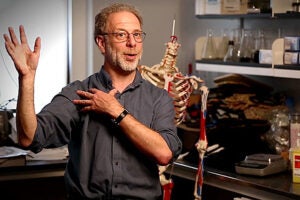
-
Nation & World
Mouthful of clues
Harvard researchers have demonstrated that the levels of barium in teeth correspond with breast-feeding. Importantly, they said, the barium levels can remain in fossils that are thousands of years old. This provides new opportunities to study breast-feeding behavior among Neanderthals and early humans.
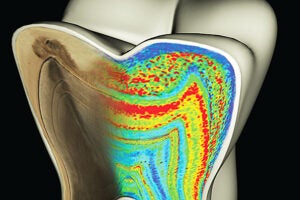
-
Nation & World
Coelacanth genome surfaces
An international team of researchers has decoded the genome of a creature whose evolutionary history is both enigmatic and illuminating: the African coelacanth
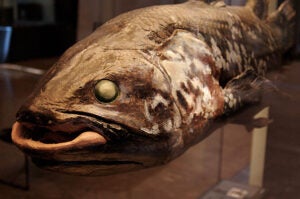
-
Nation & World
Not as evolved as we think
Lest you think you’re at the top of the evolutionary heap, looking down your highly evolved nose at the earth’s lesser creatures, Marlene Zuk has a message for you: When it comes to evolution, there is no high or low, no better or worse.
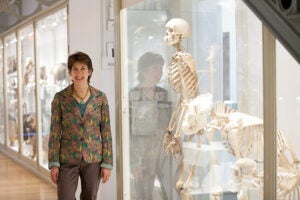
-
Nation & World
Evolutionary oomph
Scientists may soon be able to turn to one of the most powerful forces in biology — evolution — to help in their quest to develop new synthetic polymers.
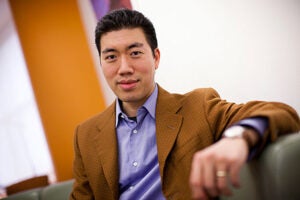
-
Nation & World
When timing is everything
In a new paper, Christopher Marx, associate professor of organismic and evolutionary biology, says that beneficial mutations may occur more often than first thought, but many never emerge as “winners” because they don’t fall within the narrow set of circumstances required for them to dominate a population.
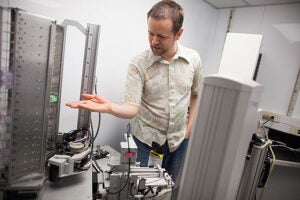
-
Nation & World
One gene, many mutations
In a new paper, Harvard researchers show that changes in coat color in mice are the result not of a single mutation, but of many mutations, all in a single gene. The results start to answer one of the fundamental questions about evolution: Does it proceed by huge leaps — single mutations that result in…
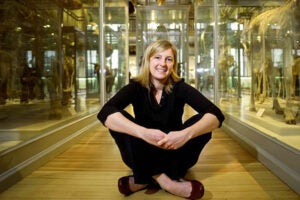
-
Nation & World
Before takeoff
Professor Arkhat Abzhanov explored links between dinosaurs and birds in talk kicking off a five-part series called “Evolution Matters.” The next lecture is scheduled for Feb. 12.
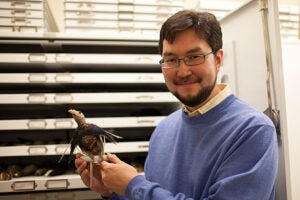
-
Nation & World
When fairness prevails
Using computer simulations designed to play a simple economic “game,” researchers at Harvard’s Program for Evolutionary Dynamics showed that uncertainty is a key ingredient behind fairness. Their work is described in a Jan. 21 paper in the Proceedings of the National Academy of Sciences.

-
Nation & World
Watching teeth grow
For more than two decades, scientists have relied on studies linking tooth development in juvenile primates with their weaning as a rough proxy for understanding similar landmarks in the evolution of early humans. New research from Harvard, however, challenges that thinking by showing that tooth development and weaning aren’t as closely related as previously thought.
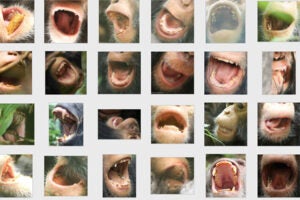
-
Nation & World
Plant power
The world we live in was made possible by the precursors to plants, which crossed two evolutionary hurdles that transformed not only plant life, but also the Earth’s atmosphere and its once-barren continents, Arnold Arboretum Director William Friedman said in a recent lecture.
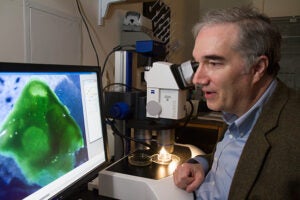
-
Nation & World
Solving a biological mystery
A team of Harvard researchers has shown that insects like crickets possess a variation of a gene — called oskar — that is critical to the production of germ cells in “higher” insects. That discovery suggests that the oskar gene emerged far earlier in insect evolution than researchers previously believed.
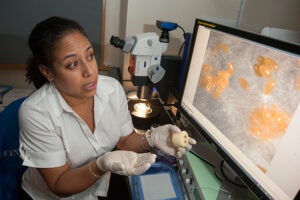
-
Nation & World
Putting humanity in its place
Professor Charles Langmuir worked for 10 years on an update of “How to Build a Habitable Planet,” a textbook published in 1985 by famed geoscientist Wallace Broecker.
